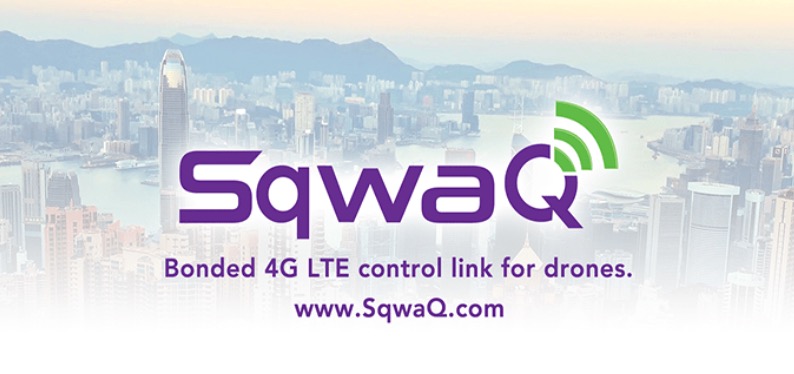
SqwaQ, a leader in communications technology for robotics, autonomy and aviation, announced this week that it has successfully demonstrated its patented airborne LTE drone communications technology for multiple partners, reports UASweekly.com.
The technology enables drones, helicopters, air taxis and other connected aircraft to share the same airspace rather than being segregated. This eliminates the need for Unmanned Traffic Management (UTM) restrictions and resolves other obstacles that have been delaying wide-scale, routine UAS integration into the airspace. SqwaQ enables safe, unconfined integration into controlled airspace while also resolving Remote Aircraft ID, Pilot Credential Verification, Flight Path Management and other challenges that have limited UAS operations.
Easily integrated into commercial UAS, the SqwaQboard is a compact, 3”x6”x1” communication module weighing only 270 grams that aggregates six 3G/4G LTE connections into one, multi-redundant data pipe to broadcast four pilot view and downward cameras or sensors simultaneously, plus multi-redundant command and control (C2) and headroom for an array of avionics like Mode-S transponder, ADS-B in/out and VHF radio.
Built to conventional AS9100 and DO-160 aviation safety standards, it is the only carrier approved device authorised for Airborne LTE Operations. The company worked with regulators and cellular network owners for over 2 years just to gain that access.
As a result, SqwaQ can provision customised bandwidth services on 600 cellular networks across 130 countries and provide affordable roaming across regions like North America or the EU. It also means operators can fly across wide spanning regions without losing connectivity because the six modules can roam across dozens of cellular networks simultaneously.
Ted Lindsley, SqwaQ CEO, commented, “Autonomy and industrial IoT require robust, redundant communications and SqwaQ is delivering today what 5G still won’t achieve in ten years.” He added, “We have major partners working under NDA to liberate drones and fly unfettered in the airspace.”
SqwaQ can enable a remote operator in New York to fly a fully equipped unmanned aircraft through controlled airspace in Los Angeles with the added experience of sitting in the cockpit. Multiple pilot view cameras can be supported to stream live, 360 degree views around the aircraft as well as the normal downward cameras and sensors.
The remote pilot can talk to air traffic control via an onboard VHF radio just like a manned aircraft, enter the traffic pattern, Ident with Mode-S or ADS-B transponder as directed, and then land at LAX airport per ATC approval. To air traffic control, the experience would ‘feel’ like any other manned aircraft routinely handled.
The experience can also be automated so ATC can remain alert to thousands of active drone flights at any moment without the burden of managing them unless they want to use airport facilities. Gradually, that function could be automated and extend to manned aircraft as well, so air traffic controllers could manage 4-10 times the number of aircraft they handle today.
For more information

